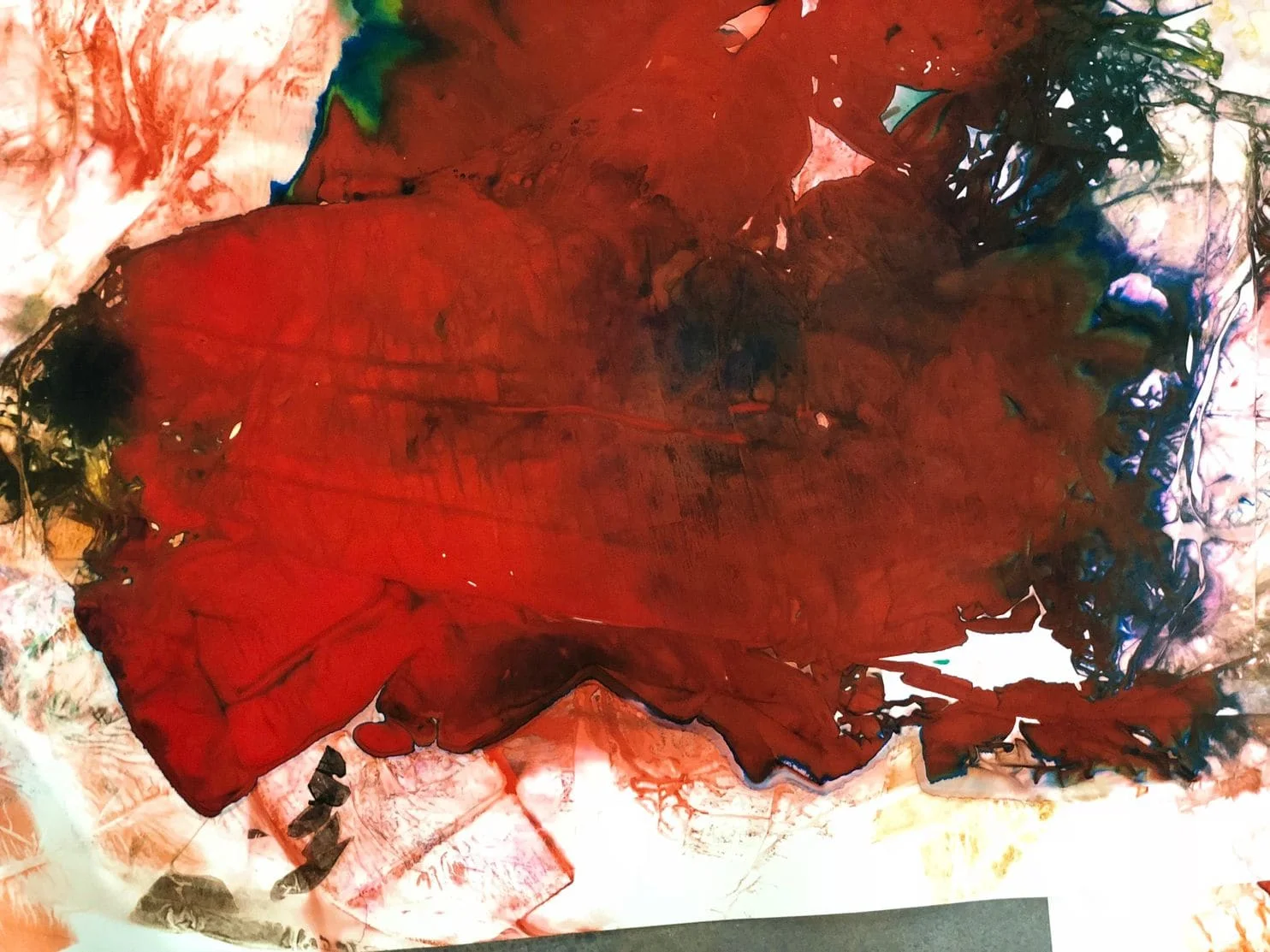One link between the three young, local artists featured in “Delusions of Grandeur: Ascension” is African American identity. Another is fabric. Amber Robles-Gordon (whose work was reviewed by The Post in July) makes abstract hanging assemblages that feature ribbons and scraps. Jamea Richmond-Edwards does idealized portraits that incorporate textiles, sequins and bows. Shaunte Gates includes bits of cloth and other found materials in allegorical paintings that draw on the tradition of biblically themed medieval and Renaissance canvases, but also sometimes suggest the heroic poses of sci-fi and comic-book characters.
The artists chose the exhibition’s title, and in a statement explain that it refers to “the ‘delusions of grandeur’ that each artist possesses in order to continue progressing . . . in their artwork.” The “ascension” part comes from one of Gates’s paintings, which depict muscular men who are both divine and debased, as likely to sprout wings as to wear to a crown of barbed wire. His figures are rendered realistically, as are some of his settings, notably the urban alley shown in “January 6, 1956: Time Traveler.” But other backdrops are wilder, sometimes verging on abstract expressionism. “May 28, 2004: Lost One” shows a man plunging into a loosely rendered whirlpool, as if diving into the picture plane itself.
Richmond-Edwards’s work is more formal. Faces, penciled in shades of gray, combine African American features with the somber bearing of Greco-Roman sculpture. Many of the countenances are identical, giving the work a paper-doll quality. These visages are surrounded by bright colors and patterns, and adorned with a rose-petal print in various colors. If the result seems a little too fashion-schooled, clothing is a part of cultural identity. Playing dress-up is one way that people define, or redefine, themselves.
Jenkins is a freelance writer.
Artists:
Amber Robles-Gordon
Jamea Richmond-Edwards
Shaunte Gates
Delusions of Grandeur: Ascension on view through Sept. 16 at Parish Gallery-Georgetown,
1054 31st St. NW, 202-944-2310,
Washington, DC
www.parishgallery.com.www.washingtonpost.com/lifestyle/style/photos-reach-deep-into-go-gos-pocket/2011/08/31/gIQAAaq6uJ_story_1.html




